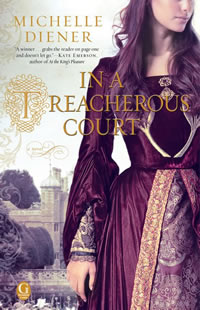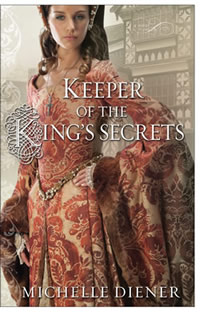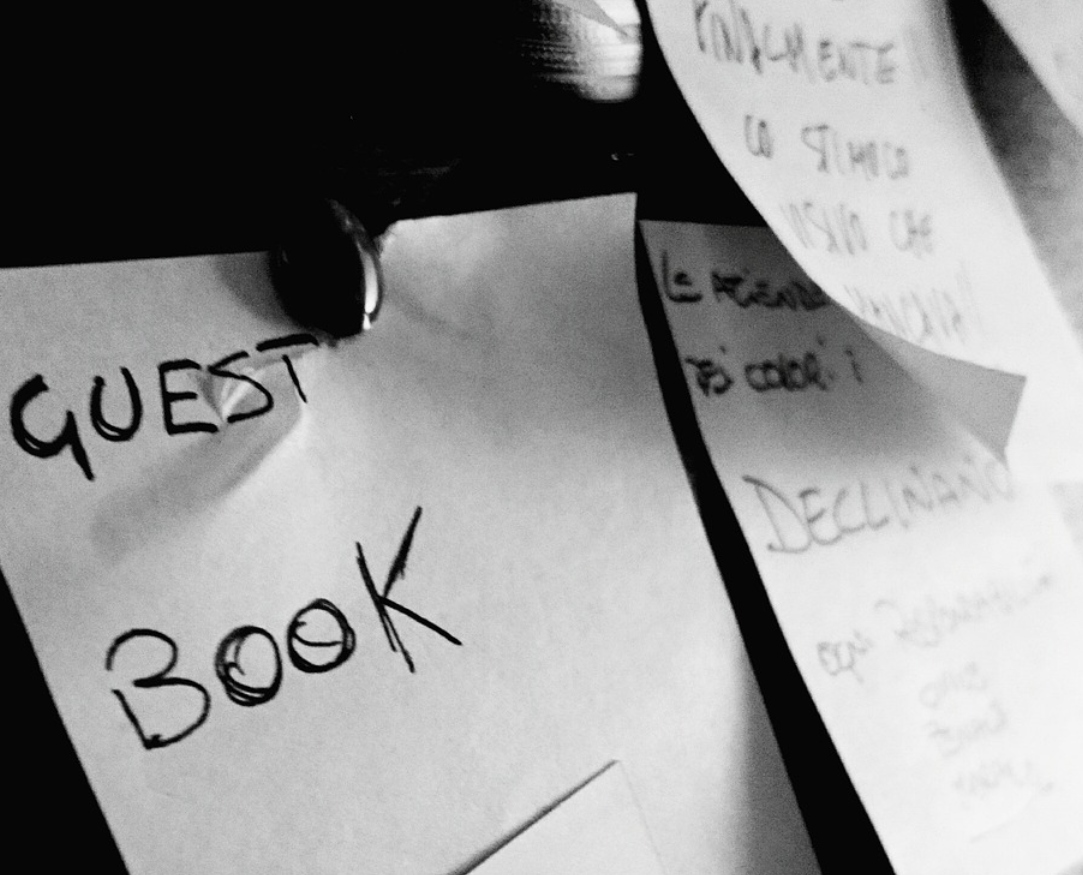The Action / Tension / Emotion Ratio
By Guest | April 3, 2012 |
 Therese here. I’m so pleased to bring you today’s returning guest and all around awesome human being, author Michelle Diener. Last year, Michelle’s debut novel, In a Treacherous Court, was published by the Gallery Books imprint of Simon & Schuster. Today the second book in her series, Keeper of the King’s Secrets–another historical thriller/suspense with romantic elements, featuring historical figures artist Susanna Horenbout and King Henry VIII’s Keeper of the Palace, John Parker–will be released. What’s the book about?
Therese here. I’m so pleased to bring you today’s returning guest and all around awesome human being, author Michelle Diener. Last year, Michelle’s debut novel, In a Treacherous Court, was published by the Gallery Books imprint of Simon & Schuster. Today the second book in her series, Keeper of the King’s Secrets–another historical thriller/suspense with romantic elements, featuring historical figures artist Susanna Horenbout and King Henry VIII’s Keeper of the Palace, John Parker–will be released. What’s the book about?
Susanna Horenbout’s chance meeting with a jeweler from Antwerp pulls her and her betrothed, courtier John Parker, into a deadly plot against the King. Ever since Henry VIII’s sister Mary gave him the spectacular Mirror of Naples, part of the French Crown Jewels, the King of France has been plotting to get it back.
After the French king is captured in battle, the secret deal struck for the jewel’s return is in jeopardy—and French agents in London are taking matters into their own hands. But the powerful Duke of Norfolk has caught wind of the secret deal and sees the planned theft as an opportunity to rid himself of a hated rival at court—even if it means plunging England into an unwinnable war with France.
As Susanna and John Parker desperately search for the jewel, trying to stay one step ahead of the French, they’re swept into a power struggle with men who will crush any obstacle to get what they want. And with the fate of a nation in the balance, they must figure out where the Mirror of Naples is hidden—before it’s too late.
Sounds action-packed, no? Michelle is both a genius researcher and a master at maintaining high suspense on the page. It’s the latter talent I asked Michelle to speak about today; how does she do it? Enjoy!
The Action / Tension / Emotion Ratio
I write historical fiction with a lot of action and tension. Therese asked me to talk today about keeping the tension high, and I have to admit, she’s made me take a step back and really think about it, because I don’t have a specific method. I’ve had to look back on my process, and what I’ve boiled it down to is an action / tension / emotion ratio.
With any scene that has any action in it, which is almost any scene ever written, unless your character is unconscious in a flotation bath, and even then she’s floating, right? – one thing you have to get right is the mechanics of it. The physical movement of the characters has to flow, make sense and stay simple so as not to confuse. The moment your reader loses the image in their head, and has to go back to see what’s happening again, you’ve lost the flow – the deep moment – as I call it, where the reader is so involved in the story, they are lost to the world around them.
But I’m going to assume that writers who are serious will work very hard to get the mechanics right. The mechanics are vital, but once they are in place, they are just actions on the page. How do we elevate opening a door, or running down stairs, or pressing up against the side of a church from merely being just that, to being something scary, something that makes the reader’s heart hitch and has them fumbling to turn the page?
You can do this in many ways. Holding out on the reader. Refusing to give them all the information, or intimating one thing to them, while actually giving them another. Having a character say one thing, but think another, or say one thing, and do another. And layer that all with the appropriate emotion.
To keep tension high, you have to keep your writing tight. There is no time for distractions. If your main character can be thinking about anything more than the problem at hand, then you’ve lost the tension, and your reader will feel cheated, too. Especially if you’ve built it up, but it isn’t as much of a problem as you made it out to be.
And I want to be clear here – I’m not talking only about high-action fight scenes. The more I thought about the issue of tension, the more I realized that this action / tension / emotion ratio is present in ALL scenes. You can give your readers a break with less of one and more of another, make it ‘light and dark’ as they seem to say in the singing trade, but without all three in each scene, you aren’t going to compel readers to turn the page.
And that brings me to emotion. For a start, emotion is the life you breath into the characters on the page. The reason why the reader has given up their time to go on this journey with you. And it is also the way to elevate a tense moment into a truly terrifying one. Or a sweet moment into a poignant one. And the one way to use this to captivate your readers is to be true. No off notes. No flat ones, either. Pitch perfect, or you’ve lost your audience. When you create your characters’ personalities, stay true to them. Don’t jerk them around like marionettes for the sake of plot convenience.
 I personally think it’s the little things that make the difference where emotion is concerned. The small observations, the unconscious action, the intrinsic reaction, that are the most powerful, and the most likely to convince.
I personally think it’s the little things that make the difference where emotion is concerned. The small observations, the unconscious action, the intrinsic reaction, that are the most powerful, and the most likely to convince.
And none of this can work without an almost impossible-to-separate entwining of all three elements.
I’ve written this with way more musical references than I realized, now that I look at it, and I’m sure there will be those who see this in a different way altogether. I’d love to hear your views, how you go about gripping your readers.
GIVEAWAY: Because this is the release day of KEEPER OF THE KING’S SECRETS, the second novel in my Tudor-set series about Henry VIII’s court painter, Susanna Horenbout, I’m happy to be giving away a copy of KEEPER OF THE KING’S SECRETS to one lucky commenter. US residents only, unfortunately.
Readers, find Keeper of the King’s Secrets at brick-and-mortar bookstores near you or online sites. You can learn more about Michelle Diener and her debut novel by visiting her her website and blog, Magical Musings, and by following her on Twitter and Facebook. And don’t forget to leave a comment if you’d like to be entered into the drawing for a book (U.S. residents only, please). Write on!
Top photo courtesy Flickr’s buckyishungry











[…] am also over at the fabulous Writer Unboxed blog today, where good friend and awesome writer Therese Walsh kindly invited me to talk about […]
Michelle’s novel sounds gripping! Finding the balance between action, tension and emotion can be a hard skill to master, but well worth it when you reach the point of being able to do anything for the reader by adjusting the ratio. I’ll have to keep it in mind myself when I write; I tend to go off on tangents or include pointless detail that takes away from the main focus…
Bonnee, it is hard, but as you say, worth it. I can (and do) sometimes ditch whole chapters if I think I’ve got it wrong.
Congrats Michelle!!! Great day, huh? :-) Enjoy!
Thanks, Sharla. And a happy release day to you, too! :)
I’m not in the US, but I’m noting the commonalities between your response and Elisabeth Loupas’s in terms of increasing tension through subtext and small reactions. Very helpful, particularly to see congruence in two historical writers who do it so well. I also like the advice about a distracted character meaning a distracted reader.
Happy release day, Michelle!
BTW, I absolutely love the dress on your cover of KotKS. It’s eye-catching and lush.
Thank you, Jan! And yes, subtext and subtlety are two very important tools, in my opinion.
Lovely post, Michelle, and congrats on your release day!
Thank you, Anna.
I love historical mysteries and am always happy to discover new ones! Your action/tension/emotion ratio is a powerful concept to keep in mind–think I’ll put it on a post-it and stick it to my computer screen. Thanks and congrats on the release of your new book.
Thank you so much, Pam. I’m glad it ‘spoke’ to you. With all matters of craft, you have to take what strikes a cord and ignore the rest. Glad it was helpful.
This is why I keep coming back to Maass’ Writing the Breakout Novel–tension is such a critical factor to get right. :) It’s the glue that marries emotion to action.
Great post–thanks for sharing your insight. And I liked the musical references :)
Angela Ackerman
Angela,
You’re right. Donald Maass’s book is one of the best craft books. I consult it often.
Thank you, Angela, and I’m a fan of Donald Maass’s WTBN, too! As for the musical references, I think it was both my kids’ day for piano lessons when I wrote that post *g*.
Michelle,
Great post and congratulations on your book. As you said it is the little details that matter and we must be careful about not hitting the reader over the head with the character’s emotional state. Best of luck with your book
Thank you, CG. Glad to find another writer who believes the little things are so important :) .
Thank you for the advice! I try to just keep in mind what I like as a reader. It bothers me when I’m getting into the tension in a book, and then the writer cuts to another scene that I don’t reallly care about at the moment– I do care about it, but really, I want to get to it later. So when I’m writing, I’m thinking, what does the reader want to find out at this moment? I also create tension by deciding what is most predictable– and then doing something completely different.
My pleasure, Christina. And yes, keeping the reader in mind always is vital.
Great post. When I have an action scene, I do it exactly as you say. Sometimes feel that I’m choreographing it in my mind, yet I always try to remember the emotion they must feel during this, too. Sometimes I feel wrung out afterward.
All your scenes have such great tension. You are the master at this.
Thanks, Edie. And I agree that writing a tense or action-packed scene can make you feel like you’ve experienced it yourself. Those mirror neurons at work.
These tips are great, Michelle. I’ve been struggling with this extact problem in my current WIP. You post was so very timely.
Thanks.
Stanlaei, I’m so glad they were helpful.
I think it’s key to have a couple of sets of fresh eyes to look for places where the tension/action lags in a manuscript. By the time I’m “done” editing, even the highest drama passages can seem like the most boring words ever written to my own ruthless eyes… Because I’ve read the same lines a thousand times!
Mari, you are so right. When I feel like that, I either send it to my critique partners or leave it for a couple of days and move on to something else, so I can go back and look at it with more enthusiasm later.
Congrats, Michelle! Great post, too. The musical references work for me. ; )
Thank you, Zan!
Great post, and I always love it when someone writes about just the thing I’ve been pondering. I’ve been struggling with a scene lately where I’ve wanted to insert more emotion without it being over-the-top or using too much telling. Finding the right balance of emotion, tension, and action can be tricky, but when you do find it, the words come alive on the page. (To the reader, at least. Like Mari Passananti, I sometimes fret that one of my scenes is too boring after having read it too much!)
Thank you, Kristin. The balance IS tricky.
YASSSSS! Michelle’s new book is out!!! In A Treacherous Court is awesome, and I’m digging the setup in Keeper of the King’s Secrets.
I also agree that it’s the little things that can keep the tension sizzling — an eyebrow lift, a twitching palm. I’m in the middle of writing a tricky scene now, and these are great reminders, Michelle. Thanks for guesting with us today.
Hi there, Kathleen! Thank you. Good to see another ‘little things’ advocate here. *g*
can i just hit the like button somewhere? like like like.
:) Sylvia, you can like away. Thank you!
I will have to look for these books. They sound just like the type I love to read.
Thanks, Sharry, I hope you enjoy!